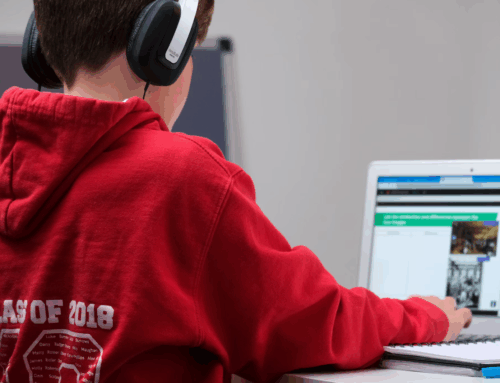 The role of parents in a child’s education has long been recognized as important, but contemporary research has transformed this general understanding into a compelling evidence-based imperative. Parental involvement is no longer a peripheral concern but a central component of student achievement, social-emotional development, and long-term success. This paper moves beyond the traditional view of involvement—helping with homework and attending parent-teacher conferences—to explore the multifaceted and research-backed ways families influence learning. It outlines the profound academic and behavioral benefits, addresses the critical challenge of redefining involvement for modern families and diverse communities, and provides a strategic framework for schools and districts to foster authentic, equitable, and effective school-family partnerships. The conclusion is clear: when schools and families collaborate in meaningful ways, students are better equipped to thrive.
The role of parents in a child’s education has long been recognized as important, but contemporary research has transformed this general understanding into a compelling evidence-based imperative. Parental involvement is no longer a peripheral concern but a central component of student achievement, social-emotional development, and long-term success. This paper moves beyond the traditional view of involvement—helping with homework and attending parent-teacher conferences—to explore the multifaceted and research-backed ways families influence learning. It outlines the profound academic and behavioral benefits, addresses the critical challenge of redefining involvement for modern families and diverse communities, and provides a strategic framework for schools and districts to foster authentic, equitable, and effective school-family partnerships. The conclusion is clear: when schools and families collaborate in meaningful ways, students are better equipped to thrive.
The Multifaceted Nature of Parental Involvement and Its Proven Benefits
Parental involvement is not a monolithic activity. According to the seminal framework developed by Joyce Epstein of Johns Hopkins University, it encompasses six key dimensions: parenting, communicating, volunteering, learning at home, decision-making, and collaborating with the community. The impact of these activities is significant and measurable across multiple domains.
Academic Achievement and Cognitive Benefits
Decades of research, including meta-analyses by Hattie (2008) and the comprehensive work of the Harvard Family Research Project, consistently show that effective parental involvement is associated with:
- Higher Grades and Test Scores: Students with involved parents tend to have better academic outcomes across subjects, particularly in foundational skills like reading and mathematics.
- Improved Cognitive and Language Skills: From early childhood through adolescence, parent-child interactions that involve reading aloud, rich conversation, and problem-solving directly stimulate cognitive development.
- Enhanced Homework Completion: While direct “help” can sometimes be counterproductive, parental structuring of time and space for homework, along with expressions of high expectations, leads to more consistent work completion.
- Increased Graduation Rates and Post-Secondary Enrollment: Long-term engagement is linked to higher rates of high school graduation and aspirations to attend college.
Social-Emotional and Behavioral Benefits
The impact extends far beyond the report card. A supportive home environment correlates strongly with:
- Stronger Self-Esteem and Motivation: When children perceive that their parents value education, they internalize this value, developing greater intrinsic motivation and a more positive academic self-concept.
- Improved Classroom Behavior and Social Skills: Students with involved parents typically exhibit better social skills, fewer behavioral problems, and a greater ability to adapt to the school environment.
- Better Attendance and Lower Dropout Rates: Parental monitoring and encouragement are key factors in ensuring regular school attendance, a primary predictor of academic success.
- Development of Grit and Resilience: Supportive parenting helps children develop the non-cognitive skills necessary to persevere through academic and social challenges.
Redefining Involvement for the 21st Century: Challenges and Barriers
A critical barrier to effective family engagement is a narrow, often outdated, definition of what “involvement” should look like. Moving beyond cookie-bake stereotypes is essential to creating inclusive partnerships.
Beyond the Bake Sale: Evolving the Definition
Traditional metrics of involvement—such as physical presence at school events during the workday—are insufficient and often inequitable. Authentic involvement must be recognized in its many forms, including:
- Home-Based Involvement: Creating a quiet space for study, discussing current events, monitoring screen time, and communicating the value of education.
- Academic Socialization: Conversations about future goals, linking schoolwork to long-term aspirations, and fostering a growth mindset.
- Supporting Learning Through Everyday Activities: Incorporating math into cooking, reading together, or visiting museums and libraries.
Identifying Systemic and Perceived Barriers
Schools must proactively identify and dismantle barriers that prevent robust family engagement.
- Socioeconomic and Time Constraints: Many parents work non-traditional hours, multiple jobs, or lack paid time off, making school-day involvement impossible.
- Cultural and Linguistic Differences: Families from diverse backgrounds may perceive the school as an unwelcoming or intimidating institution. Language barriers can prevent effective communication and lead to feelings of marginalization.
- Parents’ Own Negative School Experiences: A parent’s own history with education can shape their willingness to engage with their child’s school.
- Logistical Challenges: Lack of transportation, childcare for younger siblings, and inflexible scheduling of school events can effectively exclude many families.
A Framework for Building Effective School-Family Partnerships
For parental involvement to yield its full benefits, schools must shift from a model of parental presence to one of authentic partnership. This requires intentional, strategic, and culturally responsive efforts from the school side.
The Pillars of a Successful Partnership Program
An effective family engagement strategy is built on four key pillars:
- Creating a Welcoming and Inclusive Climate: The school environment must signal to all families that they are valued partners. This includes multilingual signage, staff training on implicit bias, and a proactive effort to make every interaction positive.
- Implementing Equitable Communication Strategies: Move beyond one-way newsletters. Utilize multiple channels (text messages, mobile apps, phone calls) in families’ home languages. Communication should be a dialogue, not a monologue.
- Supporting Learning at Home: Instead of simply assigning homework, schools should equip parents with strategies and resources to support learning. This includes workshops on how to read with a child, guides on fostering math skills, and clear explanations of curriculum goals.
- Empowering Families as Advocates and Decision-Makers: Include parent voices in key school committees (e.g., PTA, curriculum review, school improvement planning). This shared leadership fosters a sense of shared responsibility and investment.
The Role of Technology
Digital tools can be a powerful force for democratizing involvement, but they must be used thoughtfully.
- Parent Portals: Provide real-time access to grades, attendance, and assignment details, allowing for timely intervention.
- Multi-Platform Communication: Use platforms like Remind, ClassDojo, or school-specific apps to share updates, celebrate successes, and send reminders.
- Virtual Meetings and Recorded Sessions: Offering virtual options for parent-teacher conferences and school workshops removes significant logistical barriers for working families.
The Call to Action: Investing in Partnership for Student Success
The evidence is unequivocal: parental involvement is a high-yield investment. The challenge and opportunity lie in implementing strategies that are systematic, sustained, and sensitive to the needs of all families.
Recommendations for School and District Leaders
To translate the theory of partnership into practice, leaders should:
- Audit Current Practices: Evaluate existing family engagement initiatives through an equity lens. Who is participating? Who is not? Why?
- Develop a Strategic Plan: Create a formal, written family engagement policy with clear goals, allocated resources, and methods for evaluation.
- Invest in a Family Engagement Coordinator: Dedicate staff and resources to champion this work, build relationships with families, and coordinate partnership activities.
- Provide Professional Development: Train teachers and staff on how to communicate effectively with diverse families, build trust, and create welcoming classrooms.
The Ultimate Impact: A Virtuous Cycle
When schools successfully partner with families, they create a powerful virtuous cycle. The child perceives a consistent and unified message that their education matters. Teachers gain valuable insights from parents about the child’s strengths, needs, and home context. Parents feel empowered and respected, which increases their confidence and engagement. This triad of support—parent, teacher, and school—surrounds the student with the resources and encouragement necessary for holistic growth.
Conclusion
Parental involvement is not an optional add-on to the educational process; it is a fundamental pillar of student success. Its impact resonates through improved academic outcomes, stronger social-emotional skills, and better long-term life prospects. The task for today’s educators is to reject outdated, one-size-fits-all models and instead build dynamic, respectful, and equitable partnerships with the families they serve. By meeting parents where they are and valuing the many forms their involvement can take, we can collectively ensure that every student has the robust support system they need to learn, grow, and achieve their full potential.
Publishing Solutions Group
At Publishing Solutions Group, we understand that a student’s educational journey is a collaborative venture, extending far beyond the classroom walls. The evidence is clear: authentic parental involvement is a cornerstone of student achievement, social-emotional development, and long-term success.
That’s why we don’t just create content—we build bridges. Our PreK-16 educational expertise and efforts are designed and focused to support the multifaceted nature of modern family engagement as defined by leading research. We help our publishing partners develop materials that:
- Equip Parents as Learning Partners: We integrate clear, accessible guides and activities that empower families to support learning at home—from fostering early literacy through shared reading to having meaningful conversations about college and career aspirations.
- Promote Inclusive and Equitable Communication: Our solutions are developed with diversity, equity, and inclusion at the forefront, ensuring language and examples are accessible and representative, helping all families feel seen and valued.
- Leverage Technology to Connect: We help design content for digital tools and parent-facing resources that facilitate the home-school connection, providing clear insights into curriculum goals and offering practical ways to engage in their child’s education.
By embedding these principles into the learning materials we develop, Publishing Solutions Group helps publishers and educators transform the vital home-school partnership from an aspiration into a daily reality.
Let’s work together to create resources that equip every student for success by empowering their first and most important teachers: their families.
Publishing Solutions Group: Crafting content that connects classrooms, families, and futures.
Photo by sofatutor on Unsplash.




